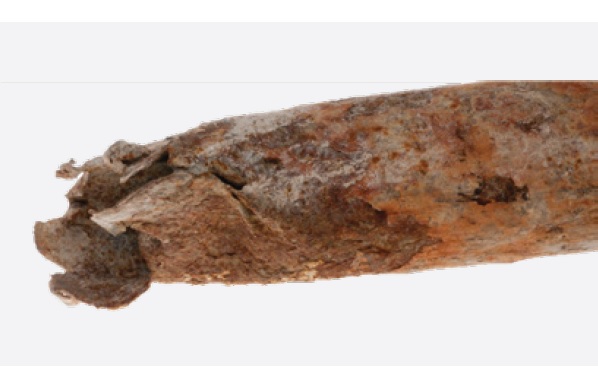What type of lances are you using in the kiln for limestone calcination? Do you ever experience material failures in the bend, middle or tip near the lance’s
burning zone? Our materials experts have a broad range of experience in
the external and internal corrosion challenges of high-temperature tubing used in a diverse range of kilns.
Battling oxidation and carburization
 Corroded tip of a lime kiln fuel lanceWhen kiln temperatures hit the 900–1,000°C range, it’s not uncommon to find high-temperature corrosion in the form of oxidation scale on the surface of the tube, sulfidation or carburization. Materials such as Alleima® 253 MA can extend service life and reduce maintenance costs for lime kiln lances under severe high temperatures, making them cost-effective alternatives to more conventional stainless steel tube grades such as ASTM 310H or 316H. Because different fuels affect the corrosion mechanism differently, we might recommend a material like Alleima® 4C54, for example, for use with sulfur-rich fuels.
Corroded tip of a lime kiln fuel lanceWhen kiln temperatures hit the 900–1,000°C range, it’s not uncommon to find high-temperature corrosion in the form of oxidation scale on the surface of the tube, sulfidation or carburization. Materials such as Alleima® 253 MA can extend service life and reduce maintenance costs for lime kiln lances under severe high temperatures, making them cost-effective alternatives to more conventional stainless steel tube grades such as ASTM 310H or 316H. Because different fuels affect the corrosion mechanism differently, we might recommend a material like Alleima® 4C54, for example, for use with sulfur-rich fuels.
Lime production
Often referred to as "quicklime", lime is the product obtained by burning limestone and other calcium-rich substances. Limestone is comprised of calcium carbonate (CaCO3), which breaks down during the burning process to produce calcium oxide (CaO) or lime, and carbon dioxide (C02), which is released, leaving the lime in a lumpy or powdery form which is usually white. Both weight and volume losses occur during the process.
| Main types of kiln (%) | Typical energy efficiency |
|---|---|
| Rotary (18%) | 45% (pre-heated 60%) |
| Shaft (13%) | 75% |
| Parallel Flow Regenerative (51%) | 85% |